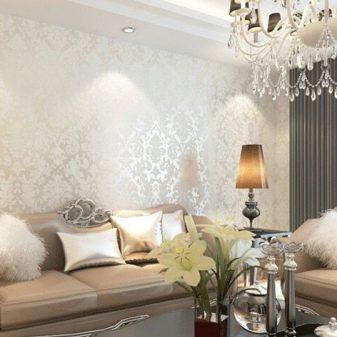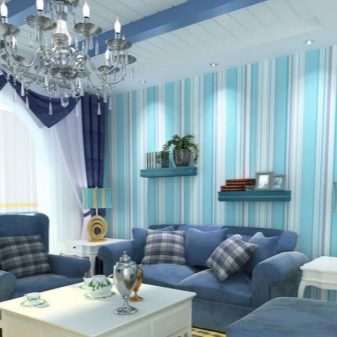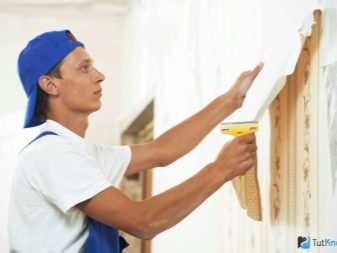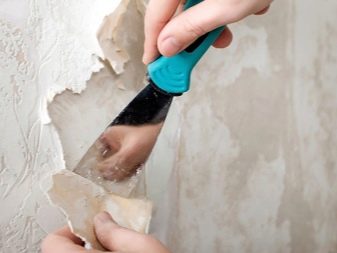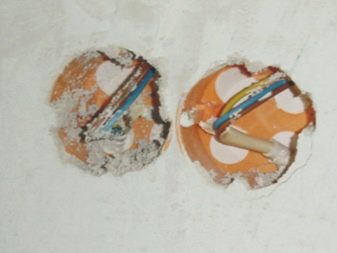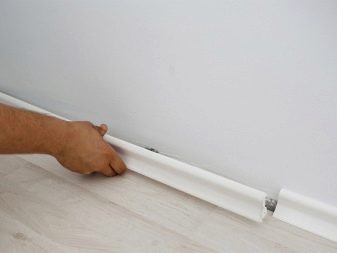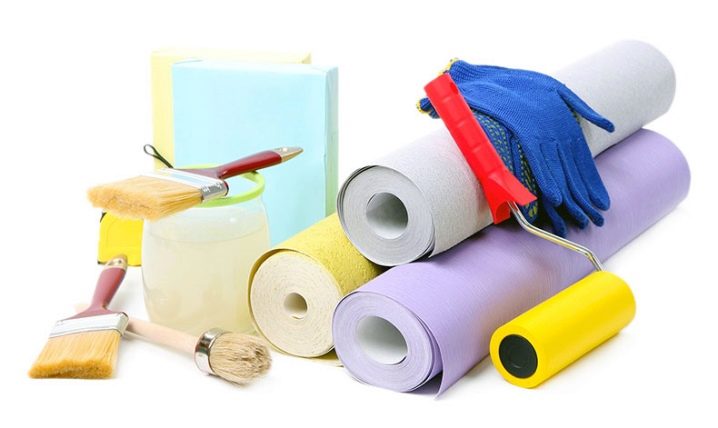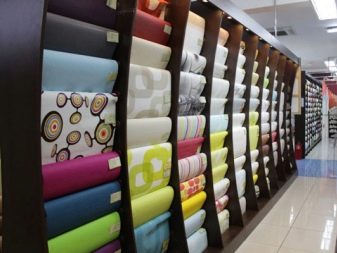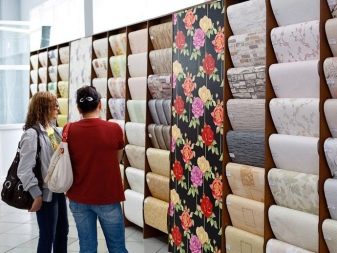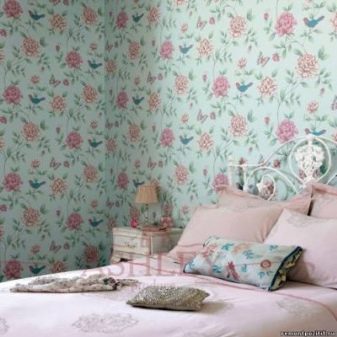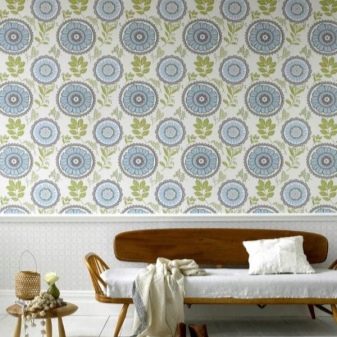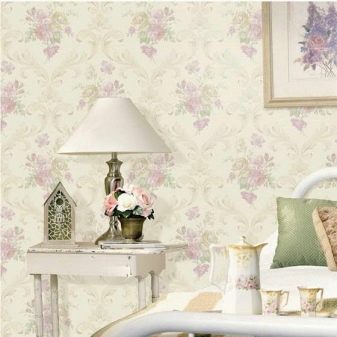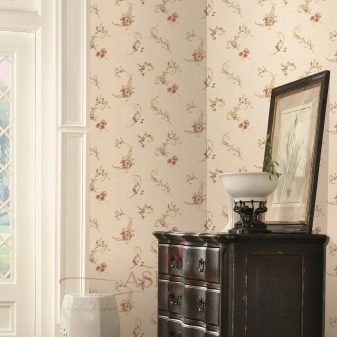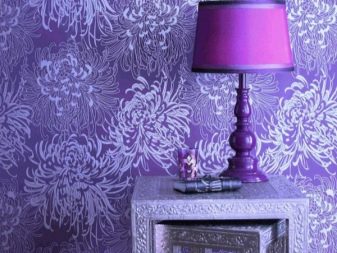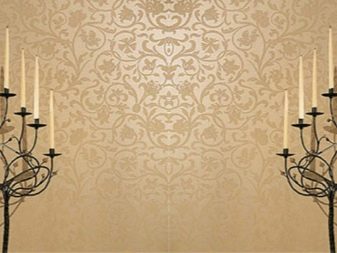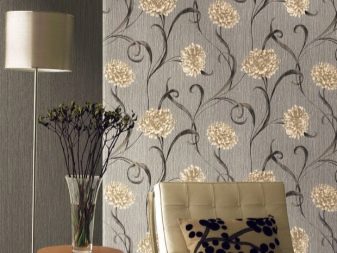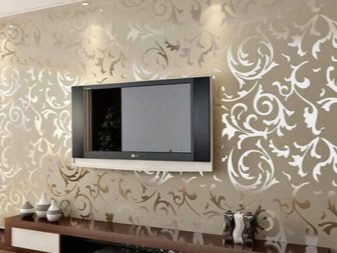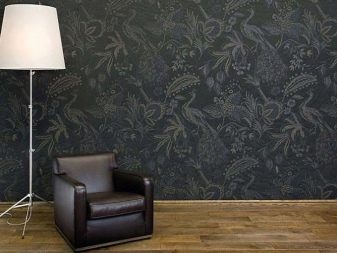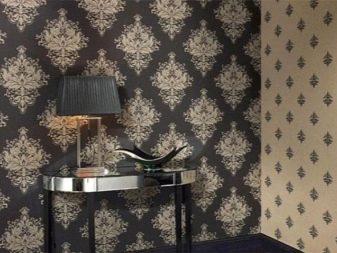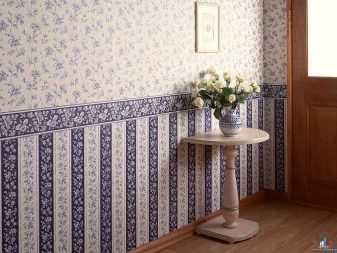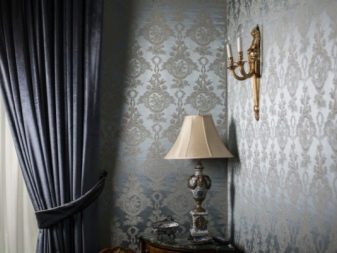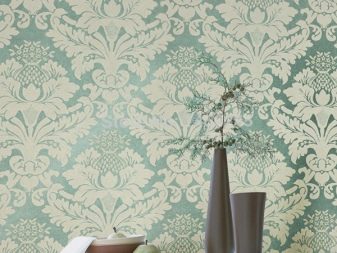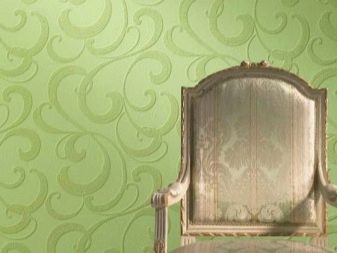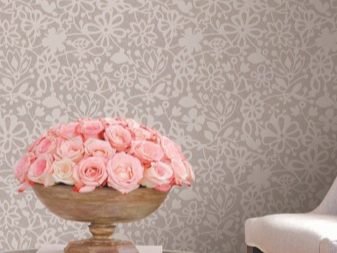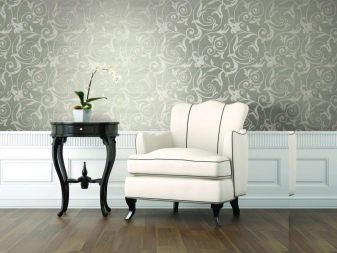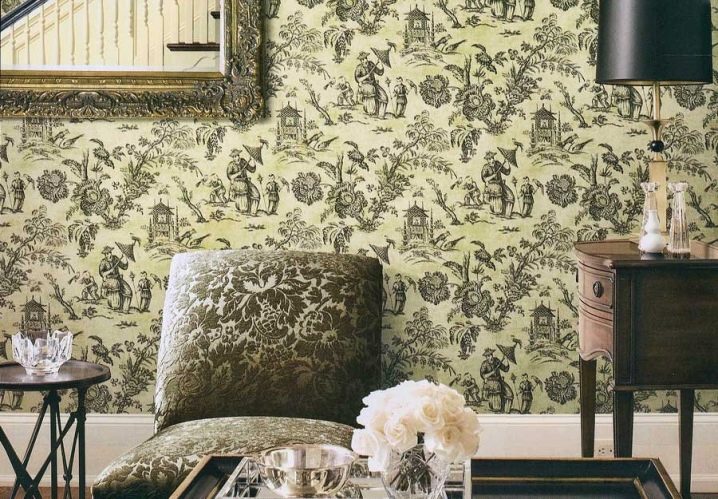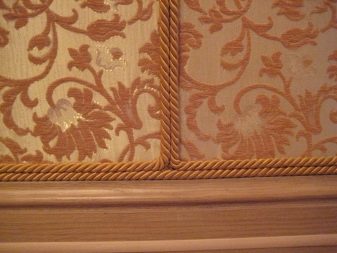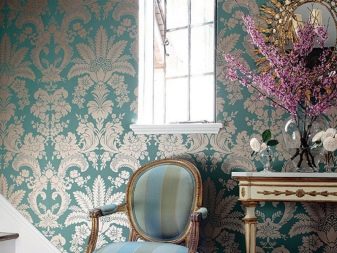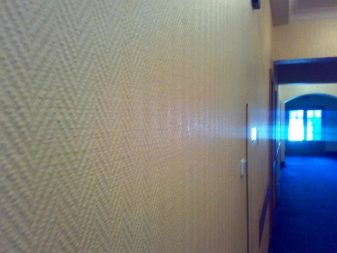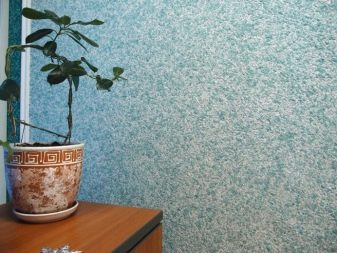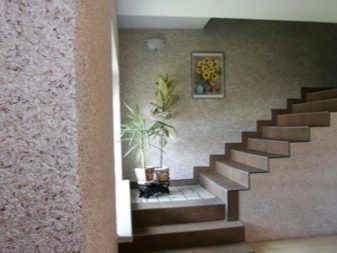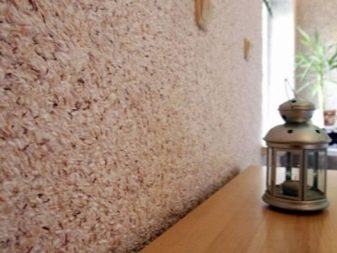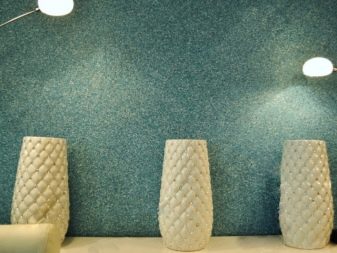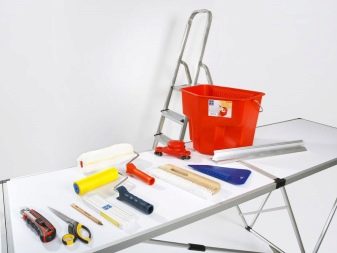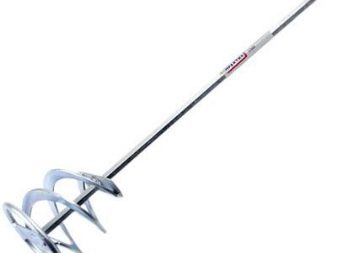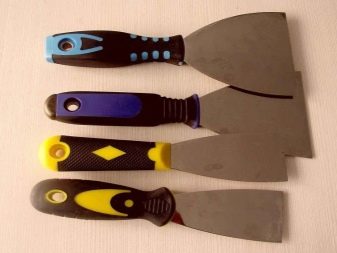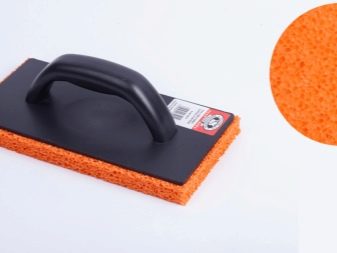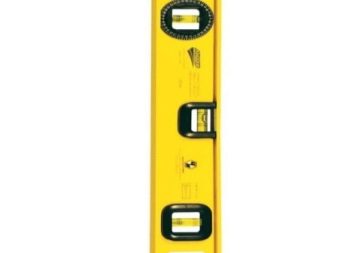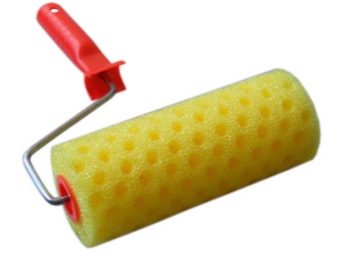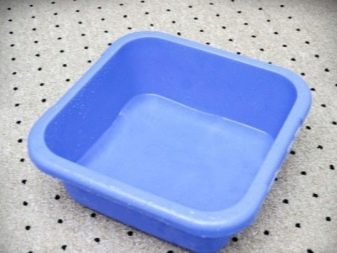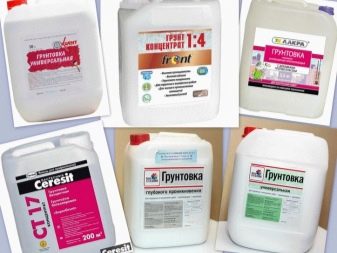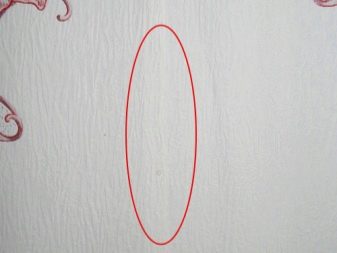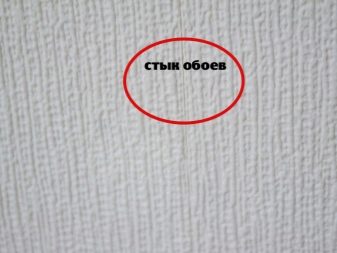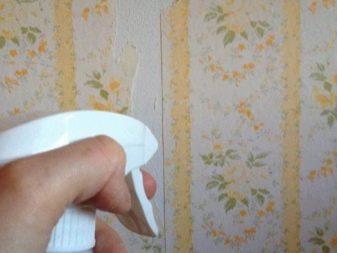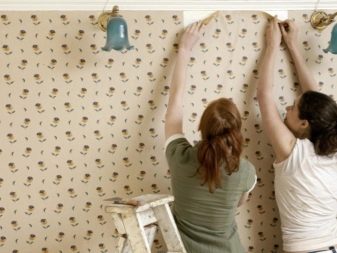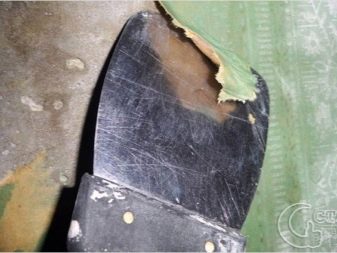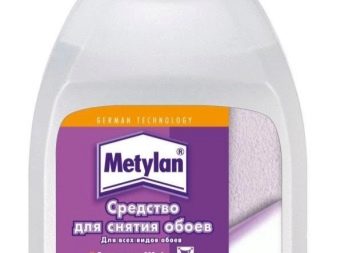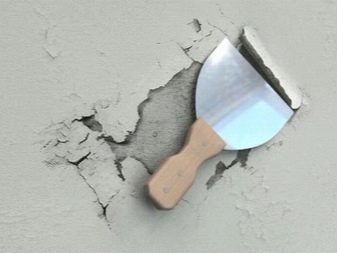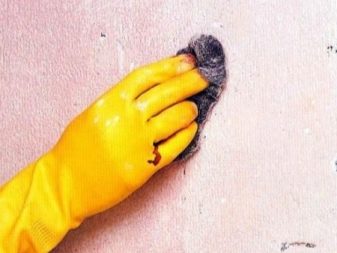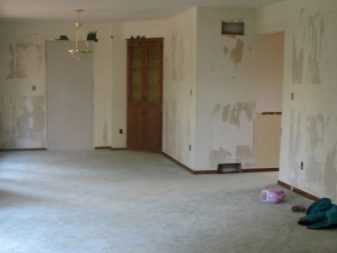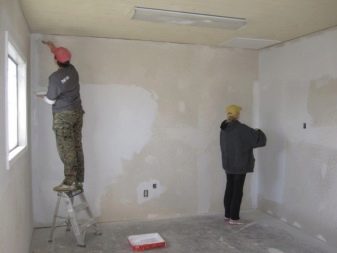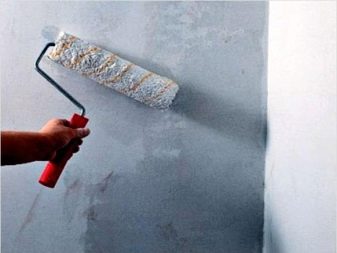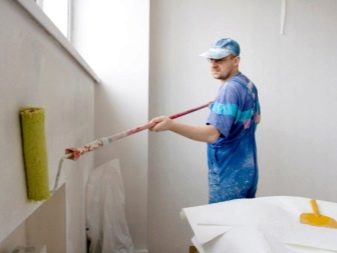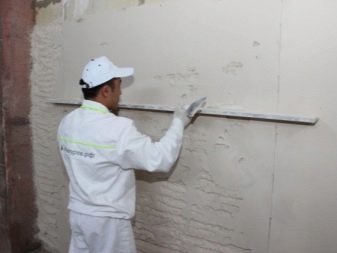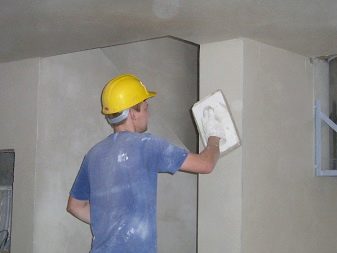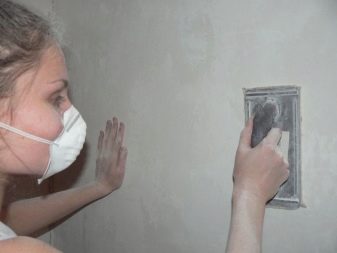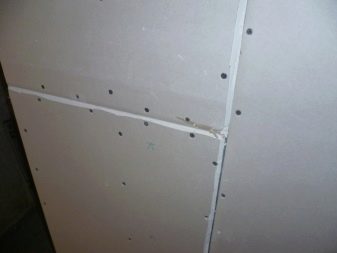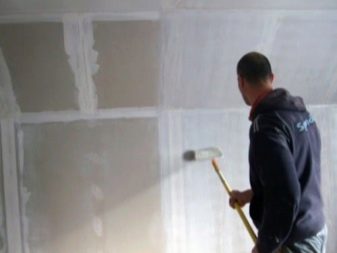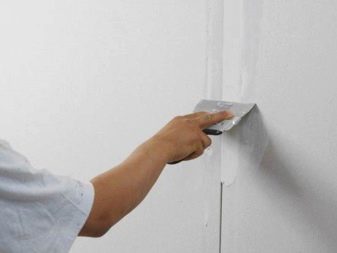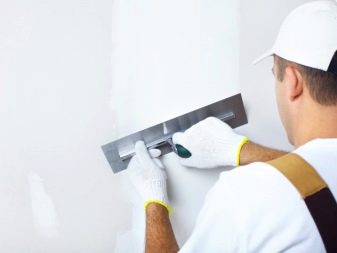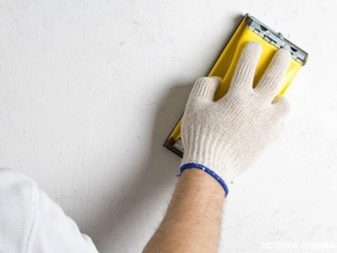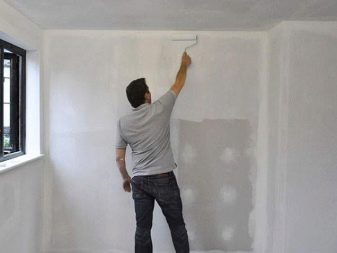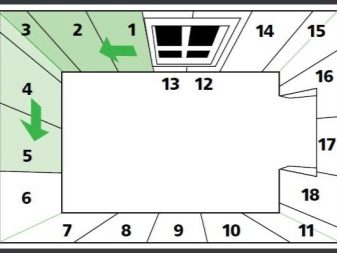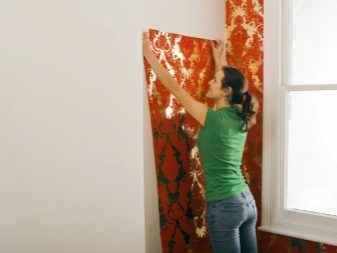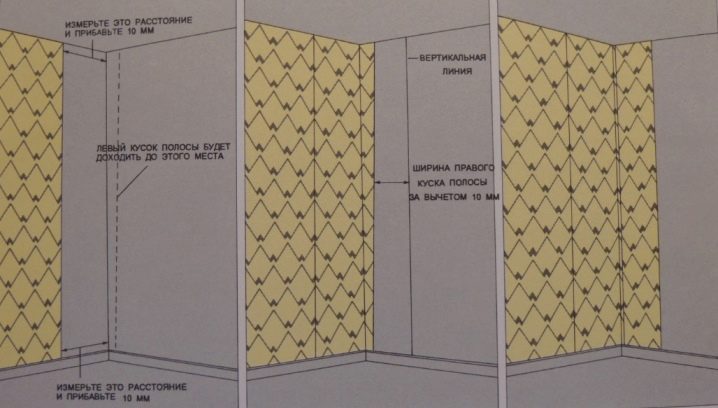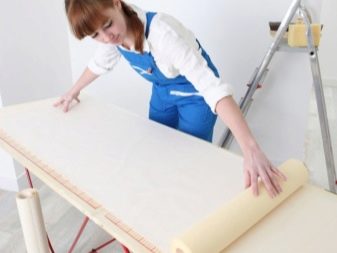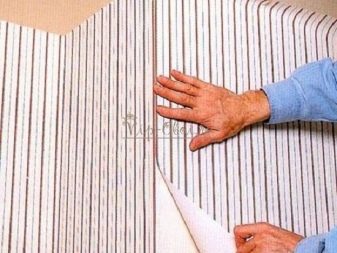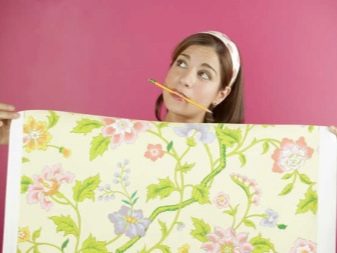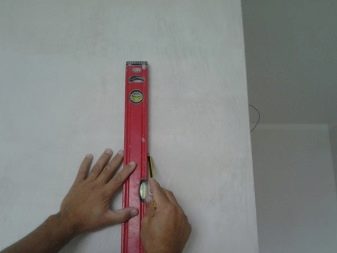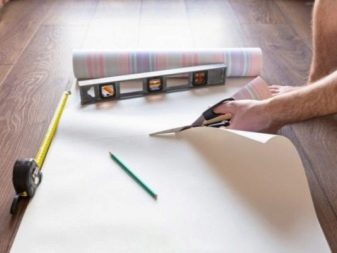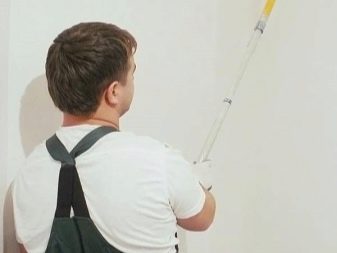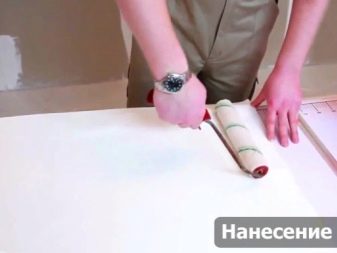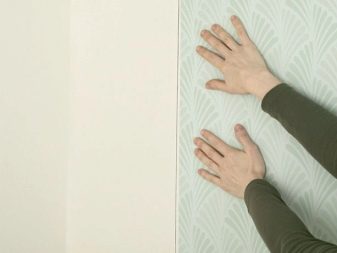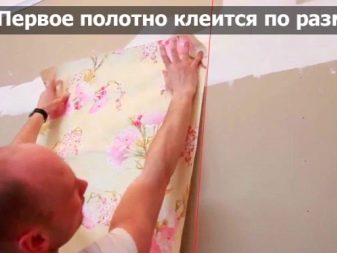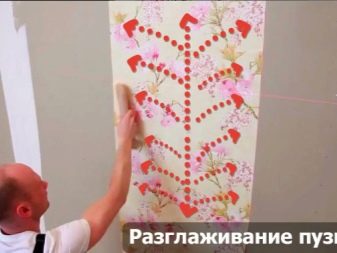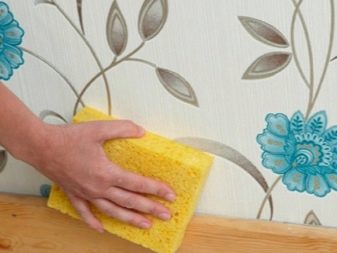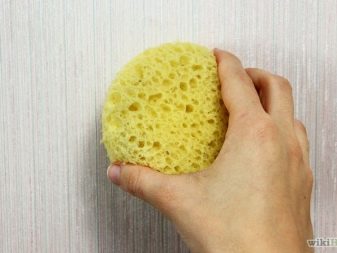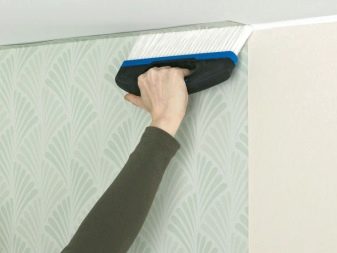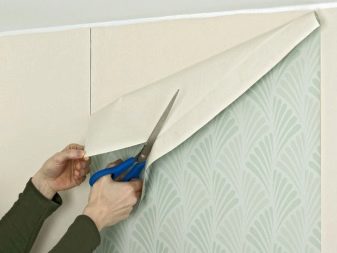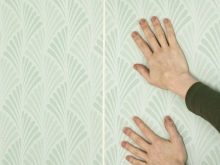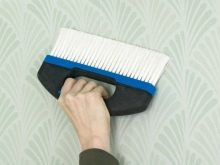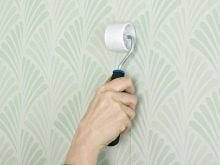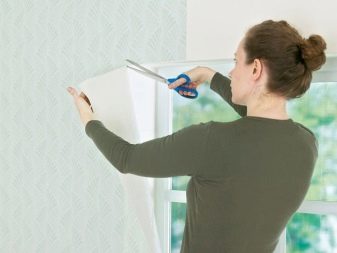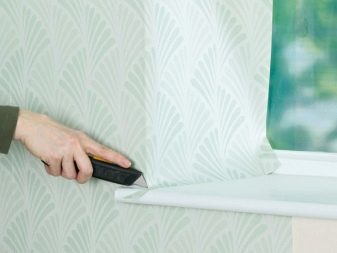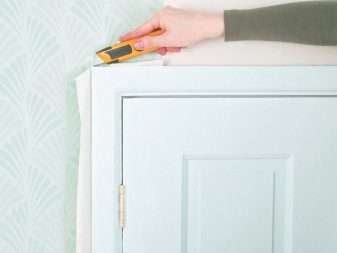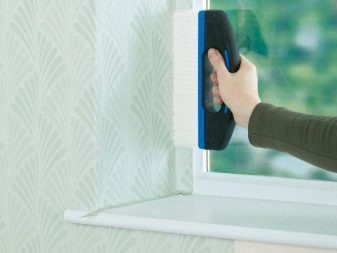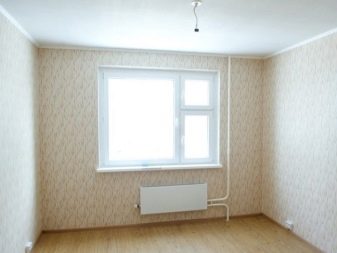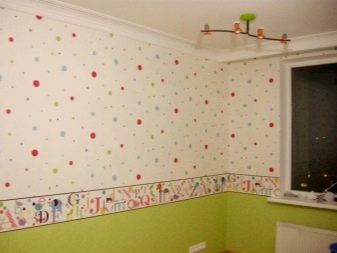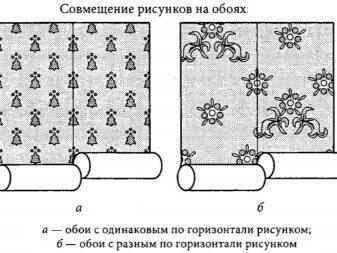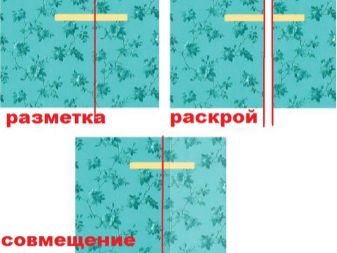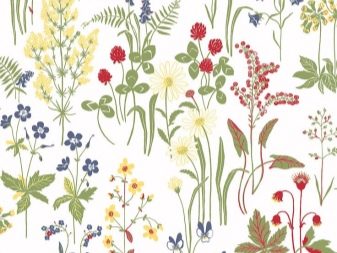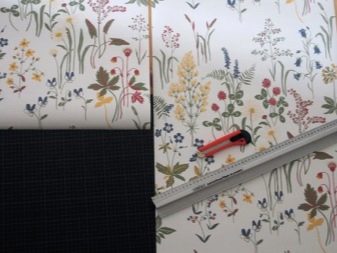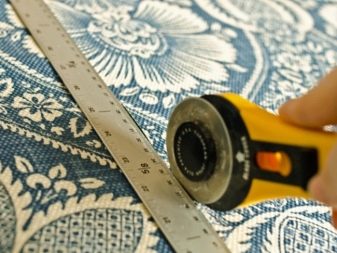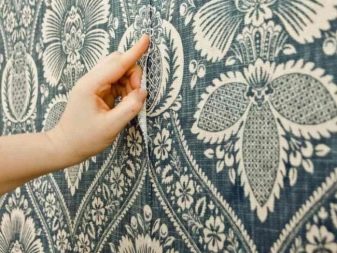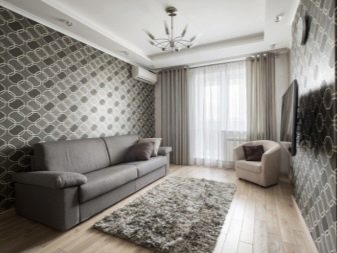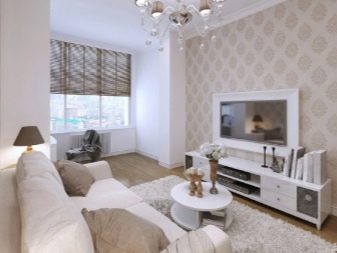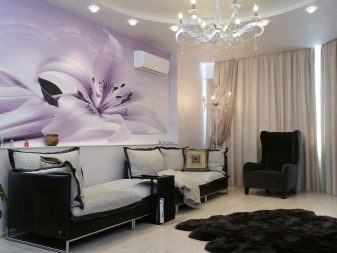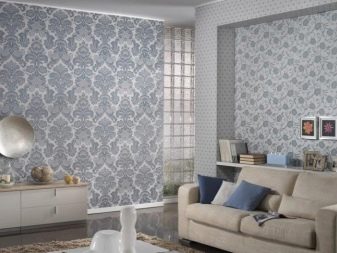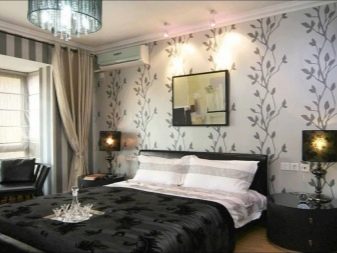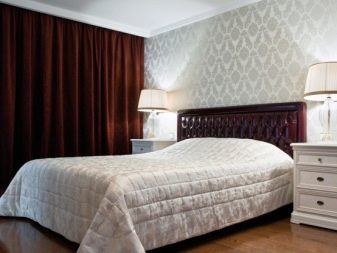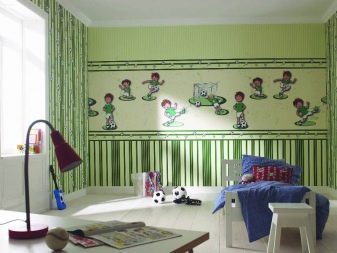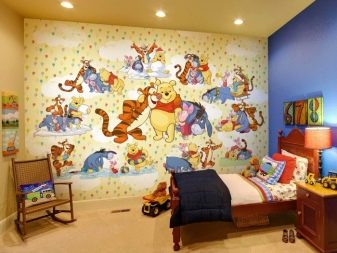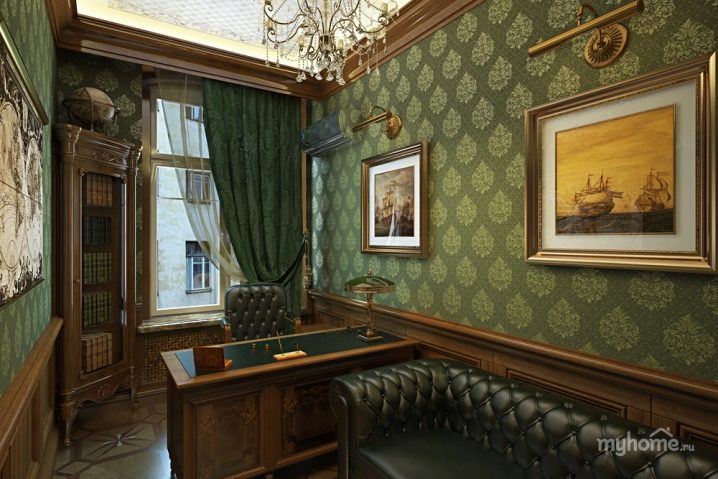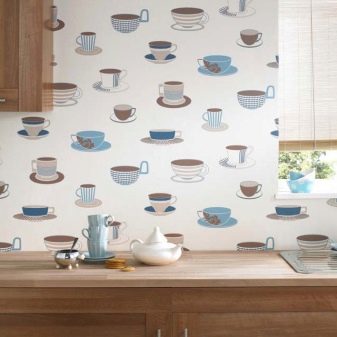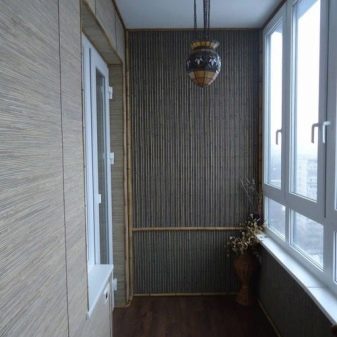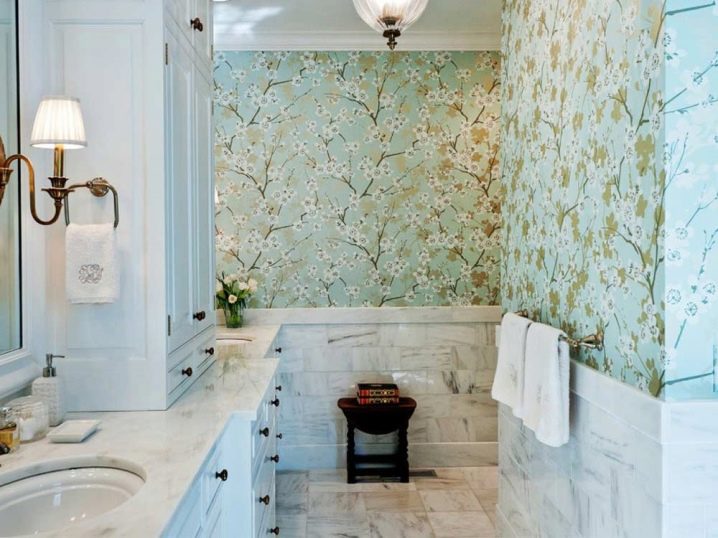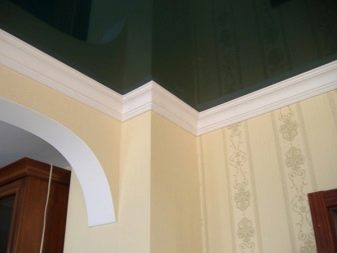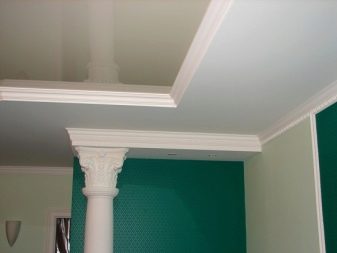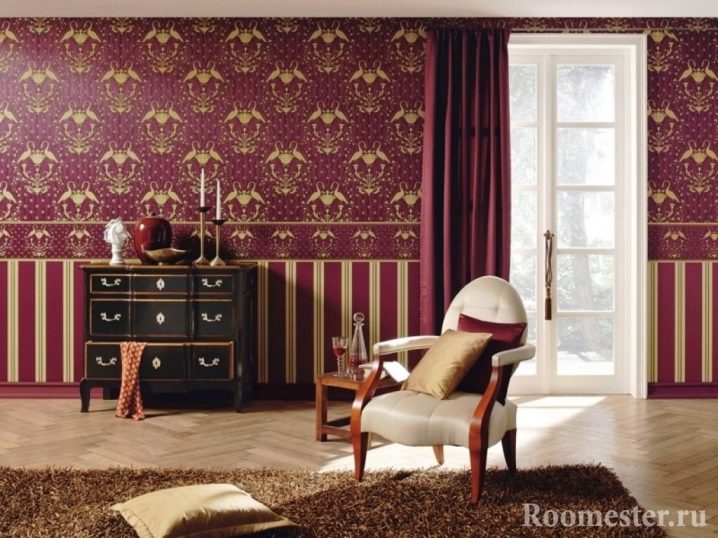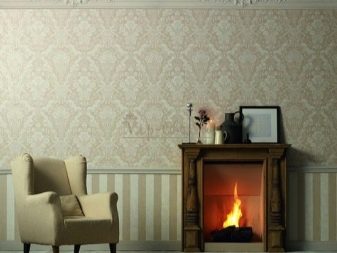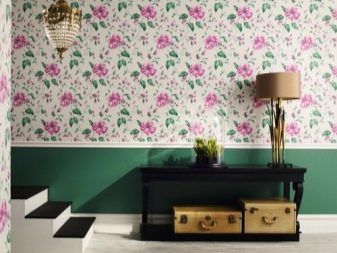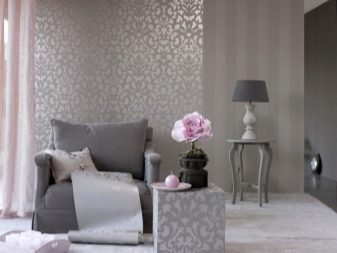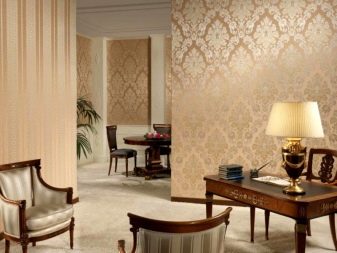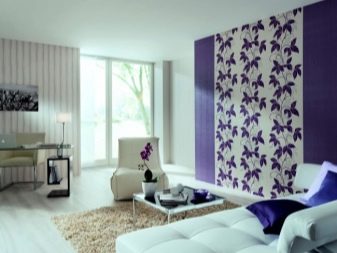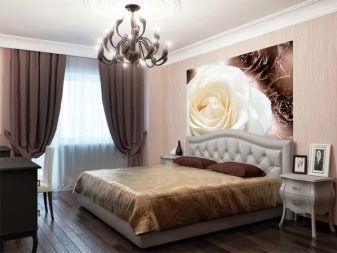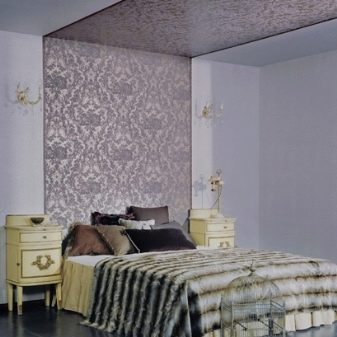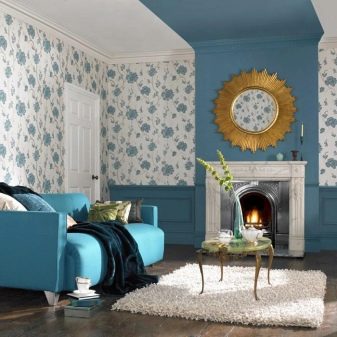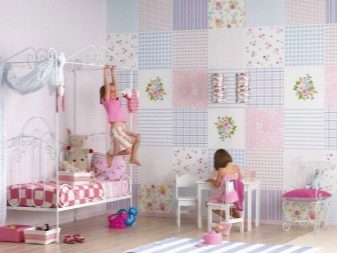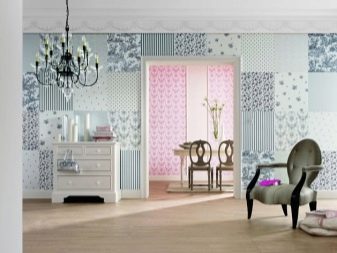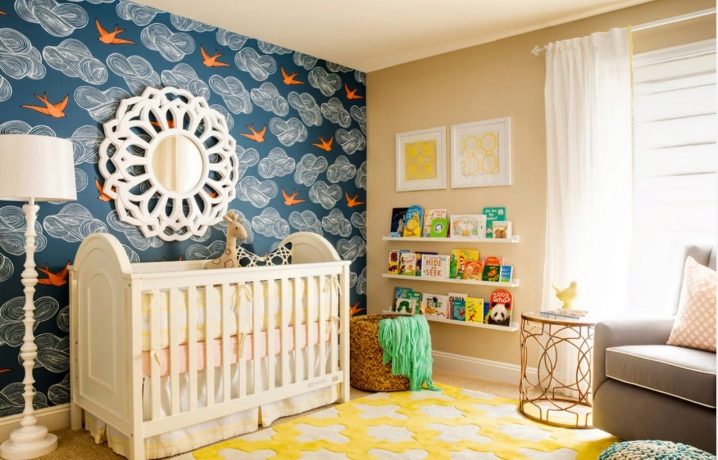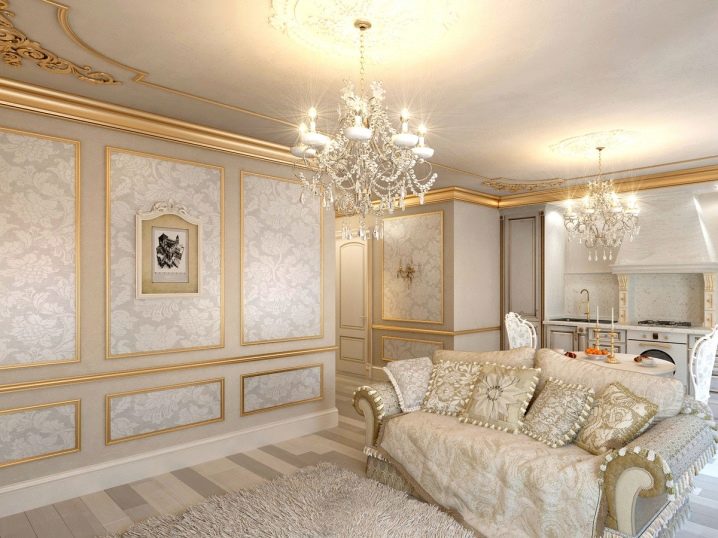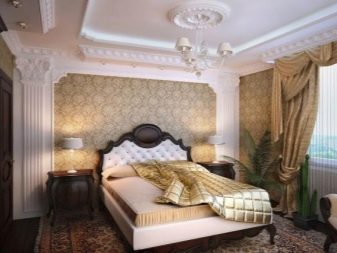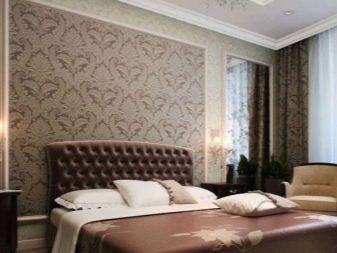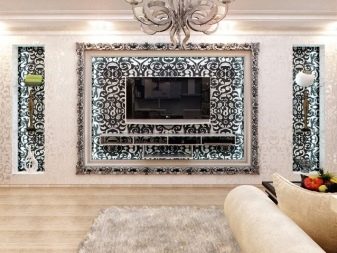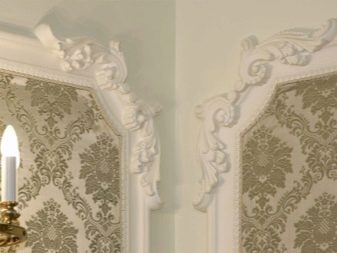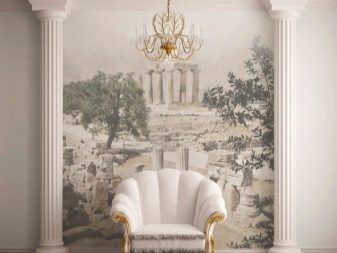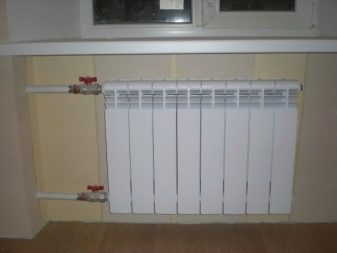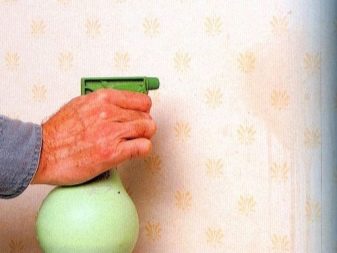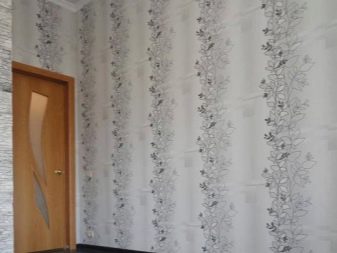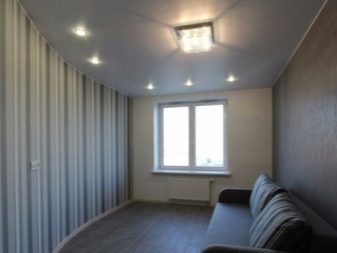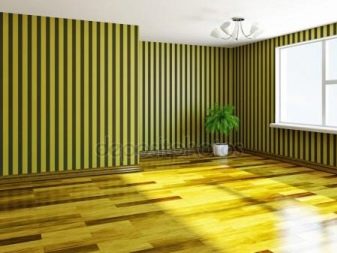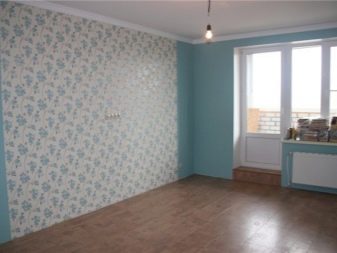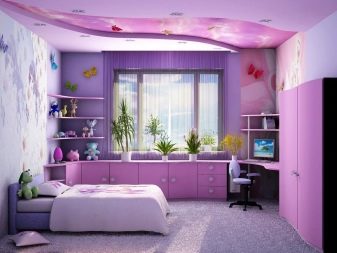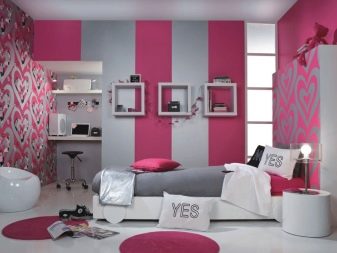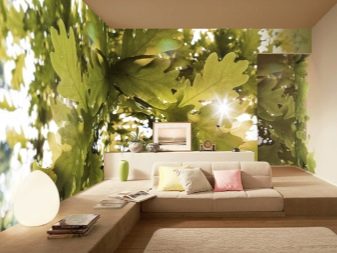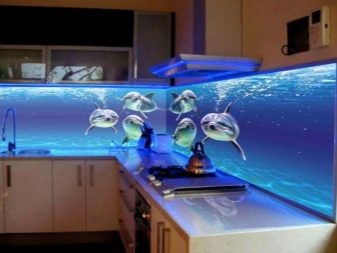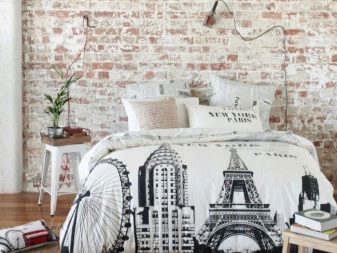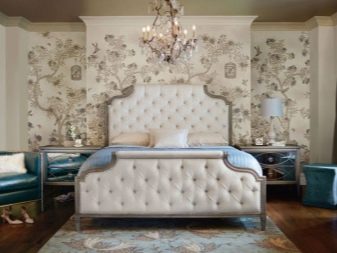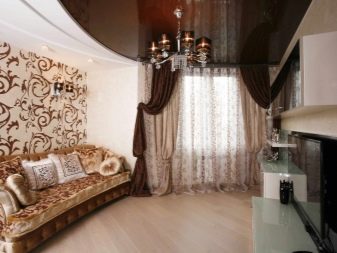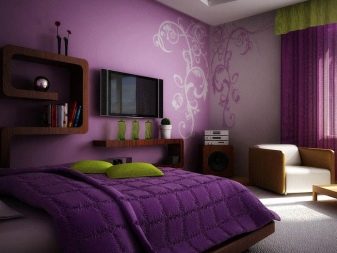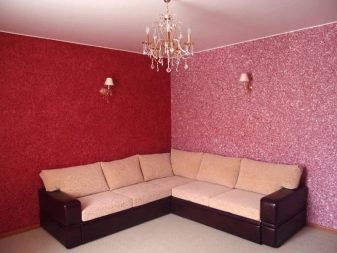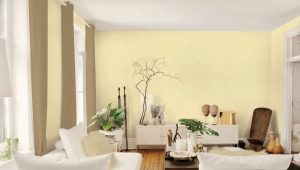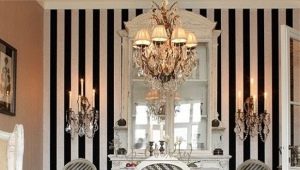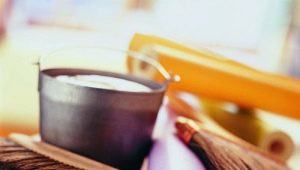How to glue wallpaper?
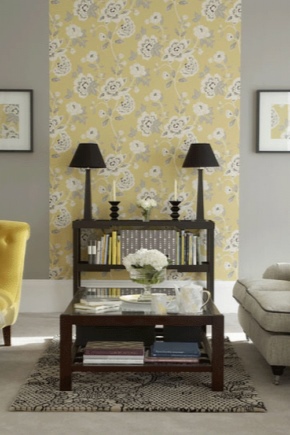
During the renovation of the house, most people get wallpaper for wall decoration. Today they are very popular among buyers of finishing materials, as before, but not everyone knows how to properly glue them on their own.
It is important to know how to properly arrange and combine the wallpaper, as well as what rules and methods to use.
Special features
Wallpapering is a process that requires careful preparation. So, the surface for gluing should be absolutely smooth and smooth. It is necessary to get rid of old coverings completely. In addition, it is necessary to determine the choice of the most suitable wallpaper and choose the most high-quality and beautiful in design coverage.
Before sticking it is necessary to make some preparatory work. So, you need to turn off the electricity and remove all the covers of switches and sockets. When sticking, you also need to get rid of all the baseboards. Thus, it is possible at times to facilitate the work itself.
The easiest way to self-glue the walls with paper or non-woven wallpaper, but it is best to choose models of medium density. They will hold well on the walls, and their sticking will take less time.
All wallpaper glue only lengthwise, in any case not horizontally. The wallpaper is first of all glued on completely free walls, and only then they cut out separate pieces and adjust them to the windows, doors, aisles, batteries and other interior features. When sticking wallpaper, it is important to make all measurements of the room and you need to calculate the number of wallpapers. If you decide to glue colored wallpaper with pictures or combine different coatings in appearance, then you will need much more materials.
Stock must be left for subsequent docking. If you chose wallpaper for painting, then you can paint only after you have completely pasted them, and they have completely dried out.Some features of sticking ready-made wallpaper with a special composition - it is self-adhesive wallpaper. Thus, the rolls are soaked in water, and the glue thus crumbles. After that, they are glued to the walls without the use of additional adhesive compositions and only roll them over the surface.
Types and characteristics
Before you buy wallpaper for the subsequent decoration of the walls, you must first select them from the presented range. Manufacturers now offer a large number of different types of wallpaper, which differ in their quality characteristics and appearance.
When choosing, you should rely on the reliability and quality of the material, the operating conditions of the wallpaper, and also in what room you plan to glue them.
Paper wallpaper
These are the most common and famous wallpapers that are popular all over the world. They are quite thin and at the same time are quite inexpensive. If you purchase this type of wallpaper, then later you can easily replace them with new paper ones. Moreover, this process will not cause any inconvenience.
Expensive and durable cover difficult to remove, in addition, such a change in the interior will take more financial costs.And if you replace the paper wallpaper, then spend quite a bit of money and at the same time change the situation. Manufacturers present a wide range of colors and patterns on these coatings. The material is completely eco-friendly and does not cause allergies. In addition, these wallpapers are breathable and allow the walls to breathe.
But this coating has several disadvantages. So, they quickly lose their brightness when exposed to direct sunlight, wear out quickly. If you have small children or even pets at home, they will easily rip them off. Paper coatings cannot be washed at all.
In addition, they deteriorate from exposure to high humidity. This applies primarily to the simplex wallpaper. These are the thinnest single-layer models that are considered the cheapest of all the options.
Double layer or duplex wallpaper
They are presented in the form of the main base layer, which fixes them well to the wall and the top decorative layer. Due to the presence of the base, the outer layer is not impregnated with glue and there are no stains and stains on it. In addition, such models are not translucent.
Many models have embossed patterns or embossed. They are thicker and more reliable, but are also fairly inexpensive. They are easier to glue than ordinary paper.
They do not slip off the wall after being soaked with glue and stick to the surface well. Such wallpapers are also presented in the form of monotonous smooth coatings, which involve pasting walls and their subsequent painting. The great advantage of this type of wallpaper is the ability to change colors several times. There are also structural wallpaper for painting with a pronounced relief.
Vinyl wallpapers
They are in the form of a basis of paper and flizelin. But the big difference from classic paper wallpaper is that their surface is treated with PVC. They can also have volumetric patterns or they can be smooth.
This variant of coatings has higher quality characteristics.
So, they do not fade from exposure to direct sunlight and tolerate high humidity. That is why they are glued even in the bathroom and in the kitchen. But such wallpapers do not allow air to pass through, therefore the walls do not breathe and it is necessary to systematically conduct airing in such rooms. But now manufacturers are some models that have a porous structure. Thanks to this coating breathes and creates a comfortable microclimate in the room.
Vinyl wallpaper is a fairly expensive coating. They serve a very long time, up to 10 years. So, manufacturers are different models of vinyl wallpaper, among them are very popular models with a hard vinyl coating. They can make even many external influences of a mechanical nature.
Another model is smooth vinyl wallpaper, which does not have solid flooring and therefore is more vulnerable to external influences. Silk-screen wallpaper - a popular model of vinyl wallpaper, which looks very presentable. Such products are produced by hot stamping technology, so it feels like the wallpaper is made from natural silk threads.
Foamed vinyl wallpaper is the most reliable products that have a dense relief structure. They are very durable and high quality. Any vinyl wallpaper is quite capricious for sticking, because they have a lot of weight. On the packaging, manufacturers always indicate what composition is needed in order to stick them well.
Non-woven wallpaper
This type of wallpaper is widely popular because it has a qualitative composition. They are made on the basis of cellulose.The coating itself includes two layers - it is non-woven and polymer.
They are more durable than regular paper. and even with duplex wallpaper. In addition, they can be used to hide wall defects such as cracks or irregularities.
Such wallpaper is much easier to glue, because if you apply the right technology, then no bubbles form under them, and the coating does not change its appearance. They are easier to dock, compared to other models. They can be moved when sticking. In addition, you can choose absolutely any texture.
Such products are suitable for fastening on plaster, including "Rotband", cement, slab, wooden walls.
In addition, when sticking on the very surface of the canvas is not applied glue. Canvases cover the wall with already applied adhesive. These wallpapers can also be easily coated with oil or acrylic paint, if you choose the most neutral option. Experts believe that it is easiest to select and glue non-woven wallpaper, so they are often purchased for self-decoration of the room.
Textile or textile wallpaper
This option includes textiles and paper. It consists of several layers.Textile materials are applied to the base. It can be flax, cotton or synthetic.
Depending on the quality of the textile material, the cost of this wall covering changes. They do an excellent job with their decorative function. In addition, the coatings have the qualities of sound insulation and heat insulation, therefore they are excellent for gluing in any premises.
But these coatings are quite difficult to apply to the wall on their own, not everyone will be able to make a gluing. In addition, it is quite difficult to take care of them; if they get dirty, it will be difficult to clean the stains. They do not tolerate wet cleaning.
Fabric wallpaper brings coziness and comfort into the room. Especially it concerns models from silk, jute textiles, felt and velor. You can take care of such wallpaper with a vacuum cleaner so that dust does not remain between the fibers of the fabric.
Glass fiber
This is a fairly reliable and unusual wallpaper, which are made using glass fiber, which are subsequently impregnated with a special liquid. Due to this wall coverings possess fire-fighting qualities. In addition, they are resistant to any, even mechanical damage.This is the most durable and reliable wallpaper that can serve more than 25 years.
They are easy to care for, and they do not attract dust at all. The coating is natural and completely safe for human health, since the woven base is well breathable. They look very presentable, but the price tag on them is clearly too high.
Liquid wallpaper
This is a new type of wallpaper that is not glued, it is applied like plaster. They are sold as a powder and then divorced. This solution is neatly distributed on the wall. When the coating dries, it looks completely identical to ordinary classic wallpaper.
Manufacturers also provide washable wallpaper that is well tolerated in wet cleaning.
These are new generation models that are great for sticking in the kitchen. Now also bamboo wallpapers are popular. This is a fairly dense eco-friendly coating that looks natural and natural. But such products are quite difficult to glue.
Manufacturers are many other types of wallpaper: cork, palm, quartz, metallized. But their self-sticking is quite complicated, not everyone will cope with such work.By the look of the decor there are classic monochrome wallpaper with a smooth surface or coating with relief. Coatings are popular in the manufacture of which the hot stamping technique is used.
As for the smooth options, coverings such as fiberglass or wallpaper are quite popular. They are used for pasting one wall. Their main function is to create an accent and attract attention. Such canvases are whole works of art in the form of paintings or abstract compositions.
Instruments
When sticking wallpaper you will need some tools:
- In order to level the walls before glueing the wallpaper, you will need to use a tape measure, laser level, long pile roller, a smoothing brush, a spatula with a soft edge, a construction knife, a narrow metal spatula, a sponge, a glue container, a pencil and, of course, a ladder step ladder.
- For further work, you will need a special nozzle - a mixer so that you can knead the putty. The mixer nozzle is inserted into an electric drill, so this tool will also be required.
- It is better to have a few spatulas in the set, which differ in their thickness and shape.So, straight, even products with a width of 5 to 50 cm will be most needed. A classic corner trowel will also be required in order to be able to draw outside and inside corners. In another way it is called the profile spatula.
- To grind the wall to smooth the surface before sticking, you will need a grinder. It can be an abrasive mesh or emery. In some cases, even use genuine leather.
- When sticking, you will definitely resort to using the building level. It is useful when leveling walls to control their ideal verticality and smoothness of surfaces.
- The roller is necessary in order to be able to apply primer or putty on the walls.
It significantly speeds up the process of applying these materials.
- In addition to the tank in which you will mix the mortar and glue, you will need a bucket or basin of water. In it, you will soak the tools in the process of work, so that you can then easily wash off the building materials from them.
- In order to level the walls, you will need two types of putty: the first will play the role of the foundation, and the second - the role of the finish.Your work will be facilitated by the already prepared putty compound. It can be purchased at any hardware store, so as not to prepare it yourself.
- In addition, you will definitely need a primer. With its help you can get rid of harmful germs. For this it is better to use formulations with special additives for mold.
Surface preparation
After you have selected the wallpaper and prepared all the tools, you need to decide on the amount of this coverage. When buying wallpaper that you need for pasting one room, it is important to choose completely identical cover. You need to pay attention to their item number and batch. Thus, all rolls will have the same shade and uniform paint.
Wallpaper try to purchase with a stock, so that you have enough for pasting all the walls completely. It is better that all the vertical sections of the walls could be closed with whole sheets. Thus, the joints between the sheets will be only wide. Horizontal joints are unacceptable and look unpresentable.
Preparatory work:
- Before you re-glue the wallpaper, you must remove all the furniture and, it is advisable to dismantle the split system.You also need to completely remove the old coating and start plastering the walls. Many use for effective removal of the old coating soap solution. It allows you to soften it and quickly remove it. Wallpaper glue or PVA can be added to the soap solution. He will quickly dissolve the old coating.
- But if you have previously been glued waterproof or washable wallpaper, they must first be cut, then make notches, and then apply the soap solution. After you moisten the surfaces with the old coating with this composition, you need to let it soak up so that the wallpaper will swell and after some time you can easily dismantle them.
- Removing the wallpaper occurs after a couple of hours with a spatula. But in this way, not all of the old coating can be removed entirely. This procedure may have to be carried out several times.
There is also a special solution that allows you to soften the old coating and quickly remove it to change to a new one.
- But to remove enamel or old paint is much more difficult. If the layer of paint is thin, it can be peeled off with a spatula, but when the paint is thick and old, it is necessary to tap the surface with a hatchet and clean the walls with a flat cutter.
- Some prepare the walls, removing whitewash from them.It should be washed off with warm soapy water and then removed with a spatula. If the whitewash is very thin, then it can be easily washed off with the help of hot water and a cloth.
- After removing the old coating and deciding on the number of wallpaper for gluing, it is necessary to correctly prepare the surface of the walls for further repair. At this stage it is possible to carry out warming, using penoplex or polyfoam. All defects must be hidden in advance. Thus, you can avoid focusing attention on them. After all, not all wall coverings are able to close the flaws of wall surfaces.
- Some wallpaper, even the most expensive, for example, fabric can highlight the flaws of the walls, so the surface must be prepared most carefully. If you prepare the walls badly, then it will be rather difficult to combine adjacent canvases, the junction lines will be uneven, and the corners at the end and the beginning of the wall will be curved. Wallpapers will wrinkle and even tear.
- On the irregularities and defects of the walls are often formed bubbles from the wallpaper, which subsequently lead to peeling of the glued coating and damage to the entire repair of the walls as a whole. That is why it is important to initially prime the surface of the walls.
- If the material from which the wall is made is porous, then it will be highly susceptible to moisture. This means that without preliminary finishing the wallpaper will not last even a year. They will come off and quickly deteriorate. Primer is recommended to be made, regardless of what material the walls are made of.
- After the walls are completely cleaned, you need to align them. In some cases, the old walls begin to crumble and crumble. If you are faced with this problem, then manufacturers recommend to resort to treatment with a bonding primer.
- If protrusions are found on the wall, they must first be knocked down. Cracks are sealed with a special composition. But at the same time, it is better to widen the cracks, then deepen them, and only then close them.
Thus, you will fill each crack with a repair compound as much as possible and correctly repair the surface of the walls.
- Extended cracks must be cleaned from dust and old plaster. This can be done with a damp sponge. The extended crack must be completely covered with a primer. It is important to thoroughly process the entire inside of such a defect, and then the outside. After that, the primer should be well dried.
- Then you should use the first layer of putty - starting, which will serve as the basis. It should be applied to the places where the cracks were smeared. After all the patches are completely dried, you need to scrape the walls with a trowel to level the surfaces.
- A little more complicated things with some coatings, which include, for example, drywall. The joints of sheets need to be glued with a special grid, which is covered from above with a thick level of putty. After this layer will be dried, it is necessary to treat the walls with an antiseptic primer. This special composition allows to increase the adhesion of finishing materials and surfaces of walls. In addition, it will extend the use of wallpaper.
- The primer-concrete contact is applied using a roller, but it is rather difficult for them to handle the corners, you need to soak them as much as possible, since it is there that the mold first of all makes its way. If you can not reach the corners, then it is better to treat these areas with a brush. The primer should be allowed to dry slightly. But if the coating has dried very quickly, then you need to apply at least two more layers of this solution.
- After that, you need to make a putty or use an already prepared, pre-purchased composition. The first preparatory layer will be the starting or leveling. It can be worn on almost any surface, including concrete, plastered walls, panels, OSB, plywood, lime, fiberboard laminated by particleboard, OSB-slab. The starting layer must be applied to the walls using the widest trowel. It must be laid in a certain way.
Thus, the thickness of the applied layer should be about 3 mm, in some places even thicker, but the entire wall should be a single flat plane. Move to the corner of the room with smooth and uniform movements.
It is better to keep the spatula at an angle of 45 °, since it will not be able to see marks on the walls.
After the solution is applied to all the walls, you need to light up the surface with the help of light bulbs and carefully consider it: will the shadows of the wall not cast a shadow? If the walls are smooth, then you will not need further leveling, but if irregularities are revealed, then you need to gently level them with a spatula until the solution has dried completely.
- After you put a putty, you need to wipe this surface. You can do it yourself with a hard sandpaper or a scraper, or with the help of special electric grinding.
- After that it is necessary to put the second layer of putty. He must finally hide all the irregularities of the wall. The finish layer is usually much thinner than the base layer. After applying it, it is important to find out if the bumps remain, again using the light.
- Finishing putty is applied in two layers, but each of them must be allowed to dry. In addition, both outer layers must undergo a quality grout, the latter being the most gentle. For her, it is better to use natural skin. After you have completely covered the walls with a putty and let it dry out, you need to apply a primer on it. Only after that it will be possible to proceed to wallpapering.
Technology
Pasting the walls with your own hands is a fairly simple job, if you choose suitable coverings for this. With their help, you can simply and without problems stick the wallpaper on your own evenly without subsequent gluing. Non-professionals need to adhere to a certain technology that allows you to quickly glue the coating to the walls. First you need to choose a wallpaper sticking scheme.Canvases should be distributed over all walls so that the joints are as inconspicuous as possible.
Basic rules and recommendations:
- When sticking any wallpaper you need to move from the window, which is located opposite the entrance to the room, alternately in different directions in the direction of the door. Thus, if you glue the wallpaper overlap, the shadow of the sheets will be invisible.
- But if you glue the wallpaper end-to-end, as they often do lately, you can stick to another technology. This option involves sticking wallpaper from the corner, which you see first when entering the room. From him in different directions you need to move alternately down to the door.
Walls should be pasted vertically with whole canvases without horizontal joints, only if this is not a special combination method.
- If the whole meter wallpaper fell on the corner of the room, then it is necessary to cut them in this place so that there are no bends. Because of them, the wallpaper can quickly peel off and start to bubble. If you come across a rather old wallpaper with an edge, then you first need to cut it straight, but now these models are rare. Therefore, it is necessary to carry out only sheet cutting.You need to know the height of the ceilings to measure the right amount of material.
- The cut off part of the wallpaper should be about 5-7 cm longer than the height from floor to ceiling. This allowance must be divided in two and leave the part on top and part on the bottom. It is important to draw a line in the center perpendicular to the edge, so that you can cut the wallpaper exactly. For this it is better to use a corner or the method of bending the wallpaper Cut the wallpaper you need with a very sharp knife or scissors, it should be done smoothly and smoothly.
- After you have cut the roll into pieces, you must stack them one on top of the other in the sequence in which you apply them to the walls. It is better to cut out the wallpaper on each wall alternately, as it is glued, and not on the whole room at once. For narrow areas of the room where there are doors, the windows need to be cut later. After all the smooth walls are plastered, you can proceed to the detailed decoration of these intermittent sections of the walls.
- After you cut the wallpaper, you need to make glue. To do this, you must follow the instructions that appear on the box with the composition. Many adhesive mixtures are diluted in water in the proportions indicated on the package. Water should be periodically stirred in the process of falling asleep, so as not to form lumps.
- Before you stick the wallpaper, make sure that there is no draft in the room, otherwise the coatings will move away from the walls due to the fact that the wallpaper is uneven. After that, you need to draw a vertical line on the wall, which will help align the edges of the wallpaper from the corner. For this it is better to use a laser level.
It is necessary to outline two points and connect them with a ruler. But the line needs to be made thin and barely noticeable so that the pencil, when soaked on the wall, does not form stains.
- On each specific type of wallpaper indicates what you need to apply glue: on the canvas itself or on the wall. Most often, the glue is applied only on paper wallpaper, but non-woven, vinyl wallpaper glue on the walls already covered with glue.
But many masters indicate that the glue is better to apply both on the wallpaper and on the wall.
You will spend more adhesive composition, but the coating will fix more efficiently and reliably. In addition, it will be easier to align the sheets, because the wallpaper will be good, but not too sharply slide on the wall.
- Cloths of wallpaper must be spread out on a flat, smooth and clean surface with the inner side facing up. It is necessary to apply glue with a roller, without missing a millimeter.After that, one edge of the canvas needs to be bent slightly to the center and missed the second edge, which should also be bent to the center. In this form, the wallpaper should be left for impregnation.
- In some cases, you will have to wait from 5 to 10 minutes, at this time you can additionally apply glue to the wall. For this you can use both a brush and a roller. After that, you can unfold the wallpaper and stick the canvas on the wall. Apply it strictly according to the marks, so that the joints are as smooth as possible. Apply the wallpaper you need from top to bottom. Allowance must be located exactly.
- The most important in this case is to set the right direction for the wallpaper. The lower edge of the wallpaper is initially better not to open, because the coating can quickly stick to the wall, when folded, it will just hang down. After you paste the top and center of the wallpaper, you can unfold the bottom and glue.
- After you have applied all the canvas, you need to smooth it from the center to all edges, and then from top to bottom. If you just smoothed the wallpaper, then you still have the opportunity to check how smoothly the canvas is located relative to the line you have previously scheduled. If deviations are noticeable, then you need to align the wallpaper a little, gently sliding them.
- After that you can make a final fixation of the wallpaper. Then you need to tightly attach the wallpaper to the wall. To do this, you can use a special plastic spatula or a brush for wallpaper, as well as a pressure roller. At the same time it is necessary to move from top to bottom, the so-called Christmas tree.
Such technology of movements involves smoothing from the center of the canvas to the side and slightly upwards alternately to the right and left. This way you remove excess glue and air bubbles from under the surface of the wallpaper.
But you need to move very carefully in order not to damage the surface of the wallpaper, especially if they are embossed or have a beautiful texture. If after that residues of glue have appeared, you need to remove them with a special sponge pre-moistened with water. This item should always be kept at hand.
If you do not remove excess old glue, the surface will not be smooth.
- At the end of the alignment, you can trim the upper edge and the lower part. It is better to do this after you have glued all the wallpaper or after each canvas in turn. Some recommend that on the surface of the wallpaper to produce the final progazhka using a rubber roller of great width.Thus, the coating will be very smooth and tightly fixed to the wall.
- After that, it is necessary to prepare the following wallpaper canvases and start pasting the walls using the same technology. In this case, you need to push off from the already exactly located edge of the previous wallpaper web. It should be placed as close as possible to the butt joint to the first wallpaper web. It is important to combine the pattern, if the coating has patterns.
- It is important that there be no gaps between the canvases. It is better to coat the canvas at the joints with glue with a thin brush, and then roll this place with a narrow roller. The correct glueing technology suggests that after every third wallpaper wallpaper, an ideal verticality should be checked using a plumb line.
- After you glue the whole wall, reaching the corner, you need to divide the corner sheet of wallpaper into 2 parts. Moreover, it is necessary to measure the distance from the previous web to the corner line and add about a centimeter to the measured width. After each corner, it is necessary to again measure out a perfectly flat vertical line so that you can push off from it when sticking the next canvases.
- In the corners, it is better to make a small overlap so that the cloths fit each other as well as possible. At the outer corners it is better to leave a margin of about 2 cm. So the corner will be decorated more carefully. After you glue all solid walls, you need to go to a fragmentary wallpapering. Where there are doors and windows, you need to start pasting from the top down, selecting the sizes of the fragments in advance and cutting them out of the canvases.
- After pasting wallpaper, you must give the coating to dry. Some wallpaper options require a different technology. So, glass fiber glue a little differently. No glue is applied to them. They need to process all walls well.
In this case, you need to choose the adhesive composition, which is designed for heavy wallpaper. Glass fiber is an important feature: the outer side is hidden inside the rolls, so glue them a little easier.
But these wallpapers dry up much longer, for this you need to wait a day.
Any glueing technology requires the use of some recommendations. So, you need to respect the temperature: the room should not be warmer than 25 degrees. It is better if the sun's rays will not fall into the room when glueing wallpaper.Drafts are also unacceptable, the wallpaper should dry out evenly.
Work with a picture
Wallpaper with a pattern is a very elegant coating that is used even more often than plain models. Popular wallpaper in flower, under the tile, under a decorative stone or with abstract patterns. But all of them are glued with fitting and with the selection of the pattern. Wallpaper must be cut with a small allowance, and the second roll will need to be customized under the first, starting from the pattern on it so that the joint is completely closed, and the seams are not visible.
From each roll, you must select a pattern that will be as close as possible to the ornament of the adjacent strip so that the docking is correct. But this way you will spend a lot of wallpaper, so you can use another way of fitting.
Need to take two rolls of wallpaper. From the top of the first you need to cut about 40 cm. Then you need to take another roll, completely unwind it and cut about 40 cm from the opposite end. This technology is due to the fact that when cutting wallpaper the machines in factories leave a small margin, which we, therefore, remove when cutting. So you can at times ease the fit.
Each roll is cut alternately and the pattern will dock with each other without any extra effort. This is a very simple and economical way; any person will be able to cope with such sticking and docking, even if he acts alone, without help. It is most difficult to work with a pattern when sticking in the corners of rooms.
It is necessary to do the docking overlap, and you need to pick up the wallpaper not to the edge of the first roll, but to the part that will be located right in the corner. The easiest way to glue meter wallpaper with a picture, because the docking will not be so difficult. It is best to do so before sticking the wallpaper and arrange them on the floor in the correct sequence, so that you can only stick them next to each other.
By itself, the technology of sticking wallpaper with a pattern is not so complicated, so it is only important to properly match them so that the pattern does not get lost, and the walls look more elegant and presentable.
Variants of interior design
Different rooms need to arrange in different ways. It is especially difficult to make pasting when a built-in cupboard or kitchen is already installed.It is also quite difficult to glue the wallpaper in the doorway, especially if you have to make out the arch. In addition to the wallpaper, located in different rooms, there are certain requirements:
- For living room better to buy only high-quality and elegant wallpaper. It is better if it will cover with beautiful patterns. In this case, horizontal combining is perfect, since this option looks very noble. In the living room often glue wallpapers, which are located on one of the walls. In this case, the image is better to choose, depending on the interior.
The most popular are wallpapers with landscapes. But in modern styles they use wallpapers with images of large cities-megacities and their sights.
In the living room are also often glued neutral wallpaper with monograms. They are easier to dock, because the pattern is constantly repeated. Besides, it looks more interesting. In the living room, they also often glue wallpaper with vertical stripes or use the vertical combination method, as this allows the ceilings to be raised, making the living room more spacious and pompous.
- Concerning bedrooms, then in this case it is better to use the best quality and natural breathable wallpaper. In addition, they should not be too catchy. For the bedroom most often get the usual paper wallpaper. But since they quickly fade, you need to try to choose a coating with a less catchy and dim pattern. Otherwise, you will have to constantly curtain the windows with thick curtains.
- In the children's room glue wallpapers with special unusual patterns. It can be photo wallpapers with images of cartoon characters or animals, birds, cars. For the children's room they often buy paper or vinyl wallpaper, as they are natural and hypoallergenic. Paper wallpapers are ideal for children's rooms because children often paint walls. Thus, it is not a pity to you to replace old coverings with new ones.
- For wall decoration in the office use wallpaper with a large pattern. It is better if they are as neutral and calm as possible.
But if the office has a small area, then you need to buy a coating with a small pattern.
- For kitchen It is better to buy washable wallpaper, because you can wipe off any dirt from them, including grease stains. But the fabric wallpaper is absolutely not suitable for this room, as well as paper.This is due to the fact that it is almost impossible to remove stains from them, they quickly become soiled and lose their initial gloss. Ordinary paper wallpaper can be glued to the balcony, but if it is not warmed, then it is better to purchase non-woven or vinyl materials.
- For bathroom and toilet it is better to choose a washable wallpaper or coating that is resistant to moisture. Thus, there will not be a fungus, and you can not worry about the integrity of your walls.
Some rooms may have difficulty sticking wallpaper due to the fact that they already have a suspended ceiling. Initially, you need to prepare it in such a way that you can hold a sticky. First you need to remove the decorative insert, which is located at the junction between the ceiling and the wall.
After that you need to glue all edges of the stretch ceiling along the perimeter with masking tape. So you protect the already installed stretch ceiling from glue stains. After that, you can proceed to sticking wallpaper using standard technology. When all the canvas will be glued to the edge of the wallpaper, you need to install a spatula and cut off the excess part of the wallpaper.Then you should remove the masking tape and install the decorative insert back on the junction of the walls and wallpaper.
Secrets of wallpaper stickers near the stretch ceiling, see the following video.
Combination Rules
When combining wallpaper, many prefer the horizontal method, this is the most popular option. It is the so-called bottom skirting wallpaper, but it is quite wide. Usually it becomes darker than the light upper part and the size of the wallpaper is chosen horizontally from a ratio of one to two. The upper part is always twice as large as the lower.
In this case, it is possible to combine not only wallpaper, but also this material with another one; different methods and variants are used in the decoration of walls. But this option has one important property: it allows you to make the ceiling in the hall higher.
Owners of premises with high ceilings can afford another type of horizontal combination:
- A narrow top can be made along the ceiling, but when sticking it is important to correctly align the upper band parallel to the floor, so that the design of the room looks very harmonious. This way of gluing is perfect for decoration of halls, dining rooms with high ceilings. With their help, you can slightly understate the ceilings and focus on them.
When combined in a horizontal way, you can use two contrasting shades or one relating to dark colors, and the second - to light.
- Another option is to combine wallpapers with the same texture, but with a different pattern, and the background color should be the same. A good combination is a combination of wallpaper with two different colors, but with one common texture. Looks stylish and vertical combination.
It is an alternation of different canvases of wallpaper in color and design. And in this way you can arrange both adjacent walls and one. To combine cloths it is necessary one through one or two through two. It is better if the chosen coatings do not contrast much with each other. Try to choose an alternation of plain wallpaper with colored, which have any pattern or ornament.
- But if you want to decorate an apartment or a house in a more stylish and fashionable way, you can resort to vertical combination of color-contrasting wallpapers. So, the combination of wide red and white stripes is popular. If you chose the method of contrasting combinations, the canvas should be wider, and if you chose the vertical combination of light and similar in color wallpaper, the stripes can be narrower.
- Another way to combine is to highlight the accent wall. You can select it using photo wallpaper or bright coatings with an ornament. But this way you can glue only one wall, preferably the shortest. At the same time, one should stick monochromatic light wallpaper on other walls.
- Combining with the use of ceilings is another interesting way. Thus, one wall covering completely comes to the ceiling, while other walls and the floor are distinguished by different colors of coatings. Thus, you make a trendy and unusual accent. So you can interestingly arrange the ceiling in the attic. It will be a bright continuation of the wall and the advantage of such an apartment layout.
- Combine wallpaper and can be a patchwork method. This is another interesting way, which involves sticking small patches of wallpaper. And it is better to glue them end-to-end. To do this, choose about five different rolls of wallpaper, which differ in color and pattern, but have at least one general tone. They are glued, observing any subject.
It is better to cut off pieces of wallpaper about 50 by 50 cm. Unusual wallpaper collages are made of them. In addition, you can use unnecessary remnants of wallpaper from the previous repair and save on the purchase of a new roll.
Such an accent wall will look bright, it is better to shape only one surface in this way, and make the rest one-colored.
- Combining inserts is another rather popular method nowadays, which consists of pasting all the walls in one tone and then gluing a small piece of bright wallpaper over one wall. It is better if this piece will have a bright and unusual pattern. Thus, wallpaper can even replace paintings. These pieces of wallpaper are pasted over with special frames or baseboards, which allow you to hide the borders and prevent the corners from bending.
- The combination of wallpaper can be more complex and interesting. To do this, use the creation of silhouettes from the wallpaper. Most often, thus make out the walls of the nursery. Initially, the base wallpapers are pasted, and then from other, more vivid, carved figures of animals, birds or something else. These elements are pasted over the first coating. Thus, it turns out beautiful and unusual pattern on the wallpaper.
Decor
When wallpapering is often used such a method of decor as molding. It is a decorative material in the form of a bulk strip that fits over the wallpaper.Typically, the length of the strap is about 2 m, but its width and design often differ. Moldings can be flat or voluminous.
Manufacturers also represent interesting models that have a beautiful texture and decorative elements. They can be made of plastic, polyurethane and other materials. More popular are elastic moldings that are easy to install. Also use the polarity moldings made of PVC or plaster, as well as fashionable marble strips. They look very elegant and elegant.
With their help make the walls, pasted wallpaper, in rooms with an interior in a classic style. Moldings are mounted on glue along all the walls on top of the wallpaper. In addition, they are often framed by windows and doorways for their visual expansion. To do this, most often use the classic straight straps.
Also for the decoration and decoration of wallpaper using a ceiling or floor plinth. Such products are strips having a semicircular cross section. They are most often used to hide the joint between the wall and the ceiling or between the wall and the floor.
Today is popular decoration with baguettes.Such slats have an interesting and beautiful texture, they can be decorated with decorative elements in the form of flowers and even entire volume images.
It is now fashionable to glue the walls with baguettes, especially in this way they often draw the edge of the doors over the wallpaper at the entrance or the edge of the arches.
Decorations for wallpapers and walls now have the appearance of entire compositions. So, the slats can be whole finished arches, columns and stucco elements. They look very beautiful and elegant.
Important nuances
You can glue wallpaper at any time of the year, but there are some nuances:
- You should not hold wallpapering in an unheated room. So, if in winter, when sticking, the batteries in the residential premises will work a lot, then in this place the glue can quickly crack, and the wallpaper will move away.
To avoid this, you need to perform several actions:
- While working, wet the cloth in cold water and cover the batteries with it.
- As the cloth dries, it will need to be wetted again and laid on the battery so that the wallpaper can be glued on. In addition, where the wallpaper is in contact with the battery, it will be necessary to periodically spray with water, so the wallpaper does not dry out or deform.
- The most important requirement is to respect the humidity in the room.The humidity indicator should be no more than 60%. If this requirement is not met, the glue from moisture will become less effective, and therefore the canvases can come off without drying. In addition, bubbles may appear beneath them. Airing or air flow into the room should not be allowed. If the humidity in the room will constantly change, the wallpaper will dry out and stick unevenly.
- It is important to close the room after sizing and to ensure a stable level of humidity and temperature. If you glue the wallpaper in a residential area, then the temperature for the different types of glue should be different. But the best indicator is from plus 10 to plus 25 °. Higher or lower temperatures will adversely affect the quality of gluing, and glue will also become ineffective. The required level of temperature can be achieved if you put the heater in the middle of the room and control its operation mode.
- Maintaining the temperature in the room where you just pokleili wallpaper, it is important not only on the day when you make pasting, but also within 10 days after that.If you ensure a stable humidity and temperature during gluing and some time after that, then the coating will be as durable as possible.
- During drying, it is better to curtain the windows if direct sunlight comes through them.
With their directional influence, they can dry the glue only in certain places, and thus the web can even partially wrinkle.
If you take into account these nuances, then sticking will not create unnecessary problems.
Beautiful ideas
- The original decoration of the walls in the room using wallpaper is a very popular way in 2017. Nowadays, when pasting, many people choose colors, playing on the contrast of dark and light shade. In this case, it is customary to glue the wall, which is located opposite the window, with dark wallpaper. This option involves the simultaneous darkening of the room and a slight lightening of the dark wall. But if, on the contrary, you want to brighten the room, then it is better to pokleit brighter wallpaper opposite the window.
- Now it is also fashionable to allocate the accent wall, making it wallpaper with a picture. For example, the pink finish can be diluted with a bright purple accent.This combination is perfect for a child's room or even for a bedroom.
- Even more fashionable and modern are 3D wallpapers. They can be a coating with a pattern in three-dimensional space, that is, the so-called panoramic wallpaper. They occupy three walls and can have a solid pattern. You can find examples of coatings in the form of entire mythological scenes or beautiful landscapes. At the same time one wall is glued with a neutral coating.
- When sticking, you can give preference to LED wallpaper. They have a beautiful color backlight, the brightness and color of which you can change using the remote control. They will perfectly go for the nursery and will look very stylish and versatile.
- In some modern interiors it is customary to use wallpaper that imitate other surfaces. So, for interiors in the style of a loft using materials with a pattern for brickwork, paving stones or even decorative stone.
- For the style of Provence or Country is characterized by the use of wallpaper that mimic stone or wood. For more classic interiors, wallpaper is used under a wooden floor or skin.The use of floral motifs as a print on wallpaper is very popular. With this wallpaper you can select one wall in the bedroom.
- Large flowers are now very popular. Under them you can pick up a blanket or throw pillows and lay them on the bed.
Such an ensemble will look harmonious and elegant.
- Sometimes they try to select wallpapers for curtains, but at the same time they choose curtains only in the color of one accent wall, in order to emphasize the pattern or pattern and complete such a combination.
- No less popular this year, the combined wallpaper on the eastern and African themes. In this case, they use glueing with ethnic motifs, exotic prints and even with hieroglyphs. They are most often decorated with one or two accent walls or use horizontal as well as vertical combination.
- Today, sticking of two types of wallpaper is popular, which dock on two adjacent walls and at the same time have similar shades. It turns out that one, lighter wall smoothly flows into a darker one. Such a gradient looks fashionable and elegant.
